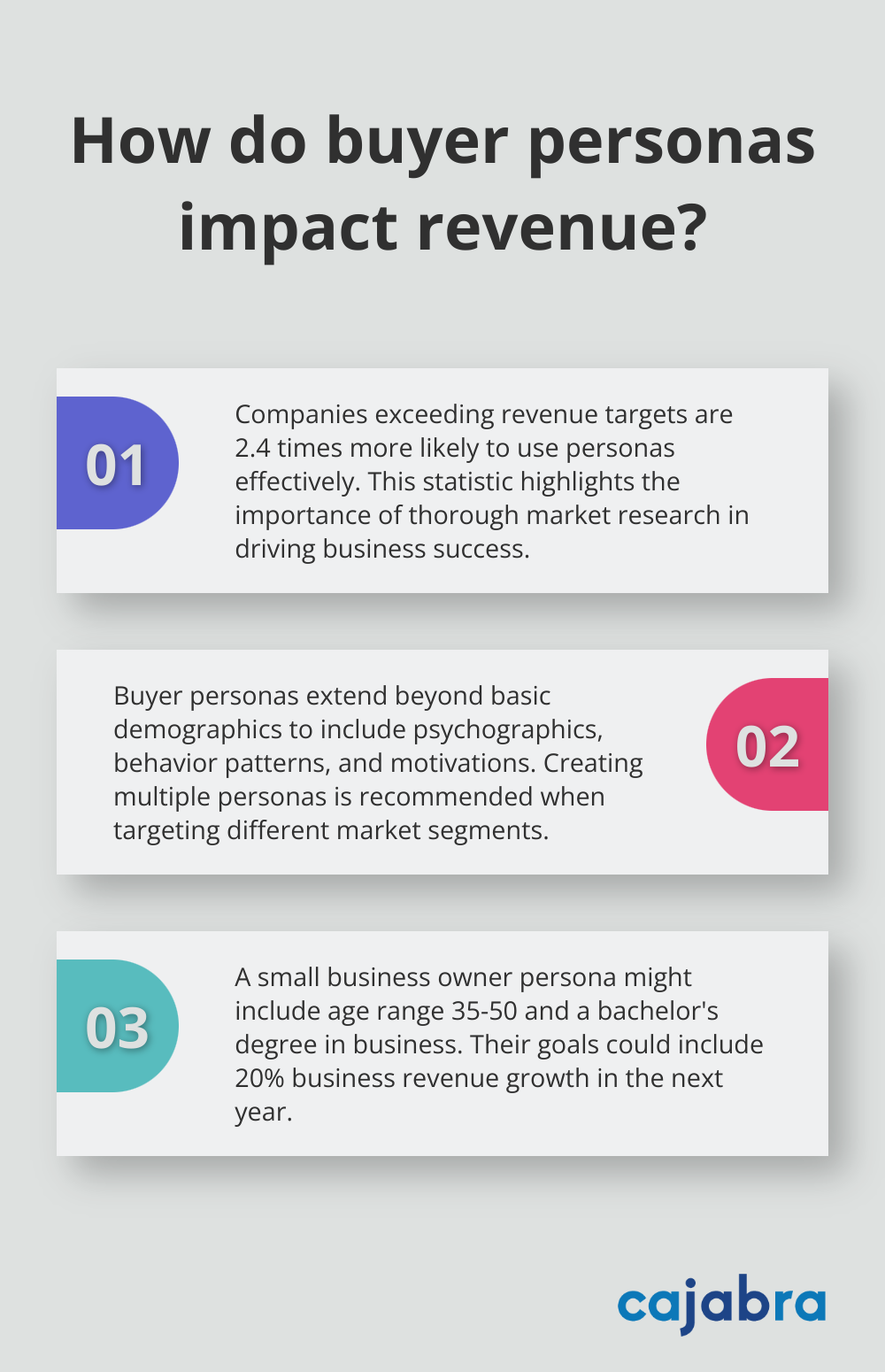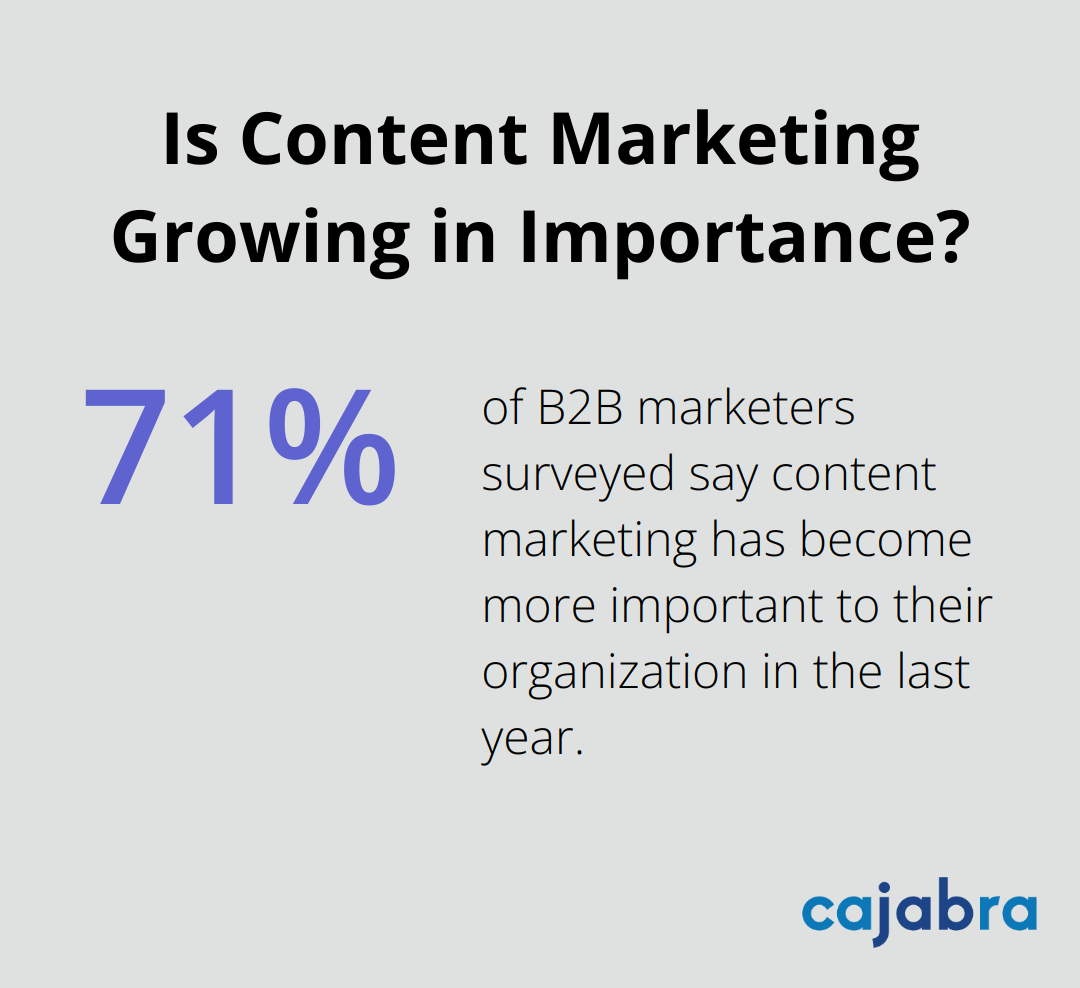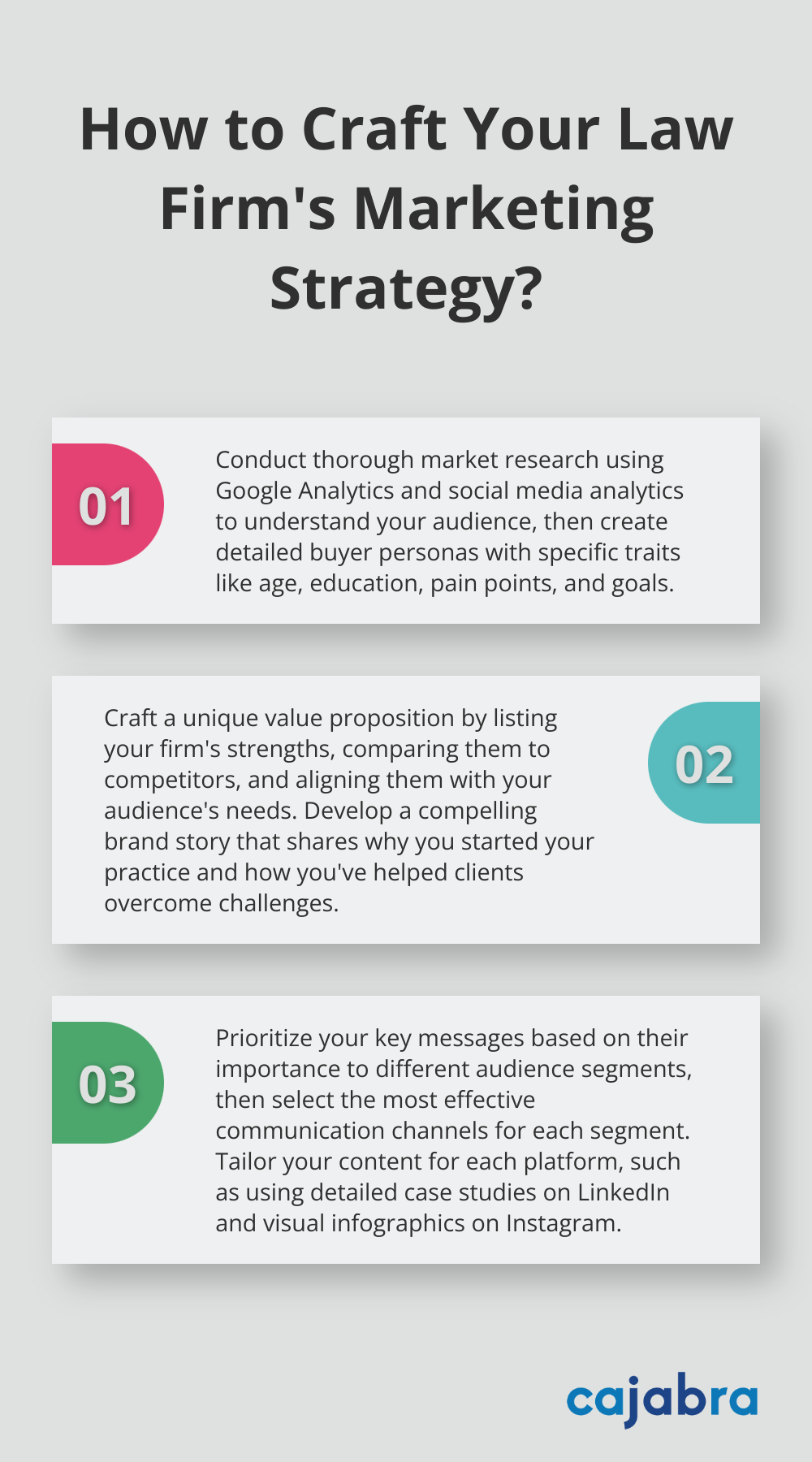
At Cajabra, LLC, we know that a strong messaging strategy is the backbone of effective communication with your audience.
A well-crafted messaging strategy template can help you align your brand's voice, values, and offerings with your customers' needs and expectations.
In this post, we'll guide you through the essential steps to create a powerful messaging strategy that resonates with your target audience and drives results.
Understanding your target audience forms the foundation of any successful messaging strategy. Start by collecting data on your potential customers. Use Google Analytics to understand website visitors and their content engagement. Social media analytics provide valuable insights into follower demographics and interests. Analyze your competitors' audiences to reveal untapped market segments.

A recent study found that companies that meet or exceed revenue targets are 2.4 times more likely to use personas effectively than those that miss their targets. This statistic highlights the importance of thorough market research in driving business success.
After data collection, bring your ideal customers to life through buyer personas. These detailed profiles extend beyond basic demographics to include psychographics, behavior patterns, and motivations.
For example, a small business owner persona might include:
Age range: 35-50
Education: Bachelor's degree in business (or related field)
Pain points: Time management and financial planning challenges
Goals: 20% business revenue growth in the next year
Preferred communication channels: Email and LinkedIn
Create multiple personas if you target different segments. The more specific you are, the more effectively you can tailor your messaging.
To create resonant messaging, understand what keeps your audience awake at night and what they aspire to achieve. Conduct surveys, interviews, or focus groups with existing clients or potential customers to uncover these insights.
Ask questions such as:
What's the biggest challenge you face in your business right now?
If you had a magic wand, what one thing would you change about your current situation?
What does success look like for you in the next 1-3 years?
These questions can reveal valuable information to inform your messaging strategy. For instance, if many target customers express frustration with complex accounting software, highlight how your services simplify financial management in your messaging.
This deep understanding of your target audience sets the stage for crafting a core message that truly resonates with your ideal customers. The next step involves translating these insights into a compelling value proposition and brand story that speaks directly to your audience's needs and aspirations.
Your unique value proposition (UVP) forms the cornerstone of your messaging strategy. It distinguishes you from competitors and addresses your clients' needs directly. For accounting firms, this could involve specialized industry expertise, innovative technology use, or exceptional customer service.

To develop your UVP:
For example, if small business owners struggle with time management, your UVP might highlight how your AI-powered tools can enhance efficiency in financial tasks.
Stories connect with people more effectively than facts and figures alone. Your brand story should intertwine your firm's history, values, and mission in a way that emotionally resonates with your audience. A study found that 92% of consumers want brands to make ads feel like a story.
When you craft your brand story, focus on the 'why' behind your firm:
Why did you start your accounting practice?
What motivates you to help your clients succeed?
Include specific examples of how you've helped clients overcome challenges. You might share how you helped a local restaurant chain reduce their tax liability by 30% through strategic planning, enabling them to open two new locations.
Your brand's tone and voice should reflect your firm's personality and appeal to your target audience. The key lies in consistency across all communication channels.
If your target audience consists of young entrepreneurs, a more casual and tech-savvy tone might work well. You could use phrases like "Let's crunch those numbers" instead of "We'll perform a financial analysis."
To maintain consistency:
Your core message isn't permanent. As your firm evolves and market conditions change, you should refine your message. Solicit feedback from clients and team members regularly to ensure your message continues to resonate and accurately represent your firm's value.
The next step in creating a powerful messaging strategy involves developing a message hierarchy and selecting the right channels to reach your audience effectively. This process ensures that your carefully crafted core message reaches the right people through the most impactful platforms.
By embracing accounting market automation, you can boost your firm's efficiency and transform your marketing efforts, allowing you to focus more on crafting and delivering your core message effectively.
Not all messages carry equal weight. Some resonate more strongly with certain segments of your audience. To maximize impact, rank your messages based on their importance to different audience segments. For example, if you target both small business owners and corporate CFOs, your messaging priorities will differ for each group.

Small business owners might respond better to messages about cost-effective solutions and time-saving tools. CFOs, on the other hand, might prioritize messages focusing on advanced analytics capabilities and regulatory compliance expertise. Align your messages with each segment's specific needs and pain points to increase engagement and conversion rates.
The choice of channels to distribute your message is as important as the message itself. Different audience segments prefer different platforms, and it's essential to meet them where they are.
71% of B2B marketers surveyed say content marketing has become more important to their organization in the last year. However, if your target audience includes younger entrepreneurs, platforms like Instagram or TikTok might prove more effective.
Email marketing remains a powerful tool, with an average ROI of $36 for every $1 spent. The key is to use it strategically. Segment your email list based on client type, engagement level, and interests to ensure your messages are relevant and timely.
After selecting your channels, adapt your content for each platform. What works on LinkedIn might not be effective on Instagram or in an email newsletter.
For LinkedIn, focus on professional insights and industry trends. Share detailed case studies or thought leadership articles that showcase your expertise. On Instagram, use visually appealing infographics or short video clips to convey key financial concepts or tips.
When it comes to email marketing, personalization is key. Use data from your CRM to tailor content based on the recipient's industry, company size, or past interactions with your firm. This level of customization can significantly boost engagement rates.
Maintain consistency in your core message and brand voice across all platforms. While the format and style may change, the underlying message should remain cohesive.
Implement these strategies to ensure your carefully crafted messages reach and resonate with your target audience, driving engagement and ultimately, business growth. Continually analyze your results and adjust your tactics based on what works best for your firm.
Try A/B testing different message variations or channel strategies to optimize your approach. Use analytics tools (such as Google Analytics or social media insights) to track engagement metrics and refine your messaging strategy over time.
A powerful messaging strategy template requires a deep understanding of your target audience and a well-crafted core message. You must conduct thorough market research, develop detailed buyer personas, and identify key pain points to create a strategy that resonates with your audience. Your unique value proposition, compelling brand story, and consistent tone will set you apart from competitors and strengthen your message.

Selecting appropriate communication channels and tailoring content for each platform will ensure your message reaches the right people effectively. You should prioritize key messages for different segments and adapt your content to suit various platforms. A messaging strategy is not a one-time effort but an ongoing process that requires regular refinement to stay relevant in a constantly evolving market.
At Cajabra, we understand the challenges accounting firms face in creating and implementing effective messaging strategies. Our specialized marketing services for accountants will help you develop a powerful messaging strategy template that aligns with your firm's unique value proposition and resonates with your target audience. We handle all aspects of marketing, allowing you to focus on serving your clients.



